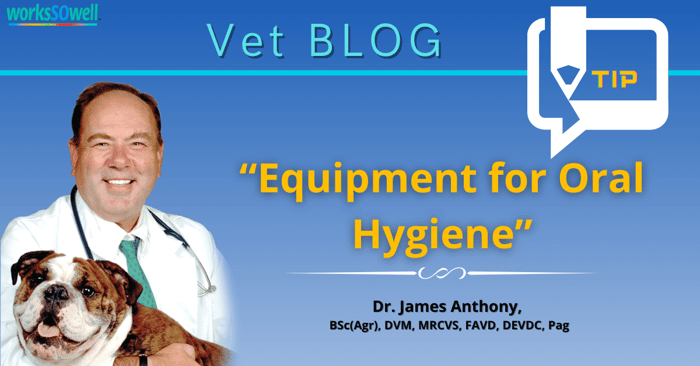Equipment for Oral Hygiene
The key to doing any job well starts with having the right tools. For your practice, you should always buy good quality equipment and properly care for and maintain that equipment. With medical equipment, it is extremely important to have sharp equipment that allows the operator to maximize their speed and technique to get the best results. Over the next 3 weeks we will be discussing Equipment for Oral Hygiene, Periodontal Surgery and Extractions.
Here are a few of the key instruments you need for Oral Hygiene work:
Periodontal probe – There are a couple of choices. A Naber’s probe has a flat end to insert into the gingival sulcus to measure the pocket depth and is easy to place even in a cat’s gingival sulcus. Another possibility which is more common is the Williams probe with a rounded tip. Both have graduation marks at 1,2,3,5,7,8,9, and 10mm.
Dental mirror – This is difficult to use initially, but once mastered, is a valuable tool for visualization, especially for the palatal and lingual aspects of the oral cavity. It is also useful as a tissue retractor to facilitate the oral hygiene procedure.
Dental explorer - This is an instrument with a pin-point tip used to investigate mobility of teeth, pupal exposure in damaged teeth, dentin exposure and other tooth abnormalities. It is usually associated with the opposite end of the periodontal probe. Care must be taken not to damage the soft tissues of the mouth.
Scalars - These are to be only used above the gingival margin and they have cutting edges on either side which can easily damage the gingiva when scaling the tooth surface. Having two to three different kinds will allow the operator to clean all surfaces of the tooth. A Jacquette is useful for straight flat surfaces or grooves, where a Towner is better for curved surfaces.

Curets – These have only one side that cuts unless it is a universal curet which has two cutting sides. These are to be used sub-gingivally. The most commonly used curet is the Gracey which has sizes 2-14. The lower numbered curet is used on the more anterior teeth and the higher numbered for the posterior teeth. Most operators will get sizes 2,6,10, and 14 to allow the operator to clean all the surfaces of the teeth.
Piezoelectric scaler - This is the safest mechanical scaler as well as the fastest. The operator must always be aware that hand scaling always follows mechanical scaling as it fine tunes the scaling process allowing for attention to detail.
Slow speed polisher - This is used to smooth the surface of the teeth to decrease the surface area for recolonization of the tooth surface.
Remember to always sterilize the equipment between uses and sharpen them. In next week’s tip, we will discuss Periodontal Surgical Equipment.










